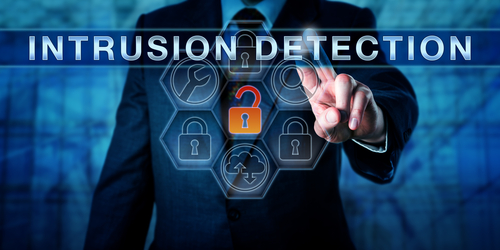The goals of security are to deter, detect, deny, delay, and respond to a threat. Perimeter intrusion detection systems (PIDS) can be a key to these goals. For industrial facilities, PIDS are particularly important for a variety of reasons:
- Facility size
- Perimeter length
- Response time
- Outdoor materials storage
- Vehicle parking protection
- CFATS compliance
- DHS Critical Infrastructure requirements
- Unmanned and remote locations
- Remote security monitoring
When most security professionals hear PIDS, they typically think about the most common solution: a fence-mounted cable system. Aside from fence mounted however, there are a few other technologies to consider. Microwave beam and buried cable are options as well.
Deterrent
When a criminal sees the fence-mounted cable system, they may decide to move on to a different site with less visible security measures. Signage that blatantly announces the system is also helpful.
Fence Detection
Fence detection systems use either copper or fiber optic cables applied to the fence fabric by specific procedure. Procedures depend upon the type of detection system as well as type and height of fence. The most common constraints are fence condition and proximity of vegetation. Fences should be in good repair and vegetation should be clear of the fence line.
Once the cable system is attached and software setup, disturbances can be detected along the fence line. Disturbances may include cutting, climbing, or other attempts to manipulate the fence fabric. With special analytics, PIDS limit nuisance alarms by processing potential alarm situations through a software algorithm that initiates alarms only for likely threats.
When an alarm is presented, integrated systems react by turning on lights, initiating public address announcements, and/or prompting specific video cameras to focus in on the alarm area within several feet.
Beam Detection
Microwave beam detection systems are typically a secondary detection method applied on the secure side of the fence. This second layer of detection may also be used for applications where a fence is unable to exist along the perimeter of the property. Likewise, beam detection may be used at gate areas where there’s a break in the fence line. Of course, without a fence, large animals can create alarms. Beam detection systems use transmitter and receiver devices to create a detection field between the transmitter and the receiver.
Buried Cable
Buried cable systems are semi-covert systems that are buried underground. They’re installed on the secure side of the fence and, like beam detection systems, create a field along the cable path. Buried cable systems are often used as secondary or tertiary detection systems.
Reaction
When one or more PIDS are activated, integrated security systems can react according to pre-programmed plans. For instance, if a fence disturbance is detected, the integrated systems can enable a chain of events, ranging from lighting activation to dispatching officers. Video verification is usually a key link in the chain to verify the validity of the alarm.
We’re Here to Assist with Planning and Implementation
There are so many variables and potential solutions for perimeter protection at industrial facilities. Consultation with topic experts is crucial.
The Vision team is ready to help with planning, from security technology options to the unique aspects your facility’s emergency response plan. We’ll navigate initial discussions with stakeholders and local authorities, explaining the technology and how it functions during normal operations and emergencies. If a pilot test is required, we’re here to coordinate on your behalf with the manufacturer of the solution. Once a security technology plan is approved, our experienced team will ensure your facility and surrounding grounds are protected.



